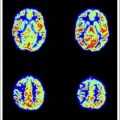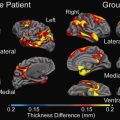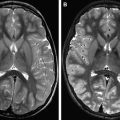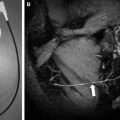Head and neck imaging has benefited from 1.5 T magnetic resonance (MR) imaging, providing faster sequences, better soft tissue evaluation, and 3-axis imaging, with less radiation and iodine-based contrast injection. The US Food and Drug Administration has approved human MR imaging at high-field strength up to 4 T in clinical practice. 3 T MR imaging has become widely available, with the hope of significant advance in the evaluation of the head and neck region. This article reviews the benefits, disadvantages, and challenges of high-field imaging of the head and neck region, focusing on the imaging of head and neck cancer.
- •
Be familiar with the role of 3 T and high-field magnetic resonance (MR) imaging in head and neck cancer
- •
Be familiar with different MR imaging techniques and sequences in evaluating head and neck cancer
- •
Establish an MR imaging protocol in head and neck imaging
- •
3 T MR imaging has become widely available, with the hope of providing significant advance in the evaluation of the head and neck region
- •
High-field imaging has many advantages but also limitations when imaging the head and neck
- •
Advantages mainly noted in high-quality and high-resolution images with better applications of diffusion and perfusion sequences
- •
High-field imaging plays a major role in evaluation of primary neck lesions, discriminating benign from metastatic cervical lymph nodes and in predicting and monitoring head and neck cancer treatment
- •
Diffusion and perfusion sequences are crucial in evaluating the nature of primary or metastatic lesions as well in follow-up after treatment
Clinical recommendations
MR imaging of head and neck cancer is usually requested in a pretreatment setting for evaluation of local extension of a known primary malignancy, especially into adjacent deep soft tissue planes, difficult to assess by computed tomography (CT) alone, such as intracranial extension of nasopharyngeal malignancy but also to exclude cartilaginous or bony invasion, such as into the thyroid cartilage, which can be difficult to appreciate on neck CT. The use of new techniques such as diffusion and perfusion sequences can play an initial role in differentiating benign from malignant primary lesions, by virtue of assessing the apparent diffusion coefficient (ADC) values and the contrast dynamics over the lesion. Regional lymph nodes can also be assessed by MR imaging to exclude their involvement by secondary metastases using diffusion and perfusion sequences, adding crucial information for the cancer staging.
MR imaging can also be used in a posttreatment setting to monitor a treated primary malignancy, and also to predict the response of a lesion to established treatment. Diffusion and perfusion sequences as well as conventional MR imaging techniques play an important role in following up treated malignancy to exclude residual or recurrent disease and may play a role in predicting the response of the tumor to treatment.
In our institution, different protocols are preset for different primary sites in the head and neck region. The usual protocols include axial T1 fast spin echo (FSE), axial T2 with fat saturation, diffusion sequence, coronal T2 with fat saturation, coronal T1 FSE, and axial, sagittal, and coronal T1 postgadolinium administration with fat-saturated and possible perfusion sequence.
Technical considerations of high-field imaging
Higher Signal-to-noise Ratio
The clear advantage of imaging with 3 T is the increase in signal-to-noise ratio (SNR), caused by the increase number of antiparallel spins at higher field. The signal increases in proportion to the field strength B0 and theoretically doubles from 1.5 to 3 T. This increase in SNR can be used for an increase in spatial resolution or for performing faster imaging. Both changes are beneficial when evaluating the head and neck region, where higher resolution images are needed because of the size and closeness of the anatomic and pathologic structures, and also faster images are particularly important for patients with local neoplasm, because they usually have difficulty swallowing and holding still while slowly breathing.
Technical considerations of high-field imaging
Higher Signal-to-noise Ratio
The clear advantage of imaging with 3 T is the increase in signal-to-noise ratio (SNR), caused by the increase number of antiparallel spins at higher field. The signal increases in proportion to the field strength B0 and theoretically doubles from 1.5 to 3 T. This increase in SNR can be used for an increase in spatial resolution or for performing faster imaging. Both changes are beneficial when evaluating the head and neck region, where higher resolution images are needed because of the size and closeness of the anatomic and pathologic structures, and also faster images are particularly important for patients with local neoplasm, because they usually have difficulty swallowing and holding still while slowly breathing.
Tissue contrast issue: effect on T1 and T2
Relaxation times are functions of the applied magnetic field. With increasing field strength, spin lattice or longitudinal relaxation time T1 increases by 20% to 40%, whereas the spin-spin or transverse relaxation time T2 slightly decreases.
T1 prolongation has a beneficial effect on the postgadolinium-based images, because longer baseline T1 relaxation times are followed by a stronger effect of T1 shortening after contrast material injection, resulting in better postcontrast enhancement. The same T1 effect, which is also beneficial in producing superior time-of-flight MR angiography studies, not specifically relevant in neck cancer imaging, leads to reduced contrast resolution on traditional spin echo acquisition. This effect can be corrected by modifying the repetition time (TR) but may result in prolonged acquisition time, which is unsatisfactory for head and neck imaging. Other methods of imaging, such as spoiled gradient recalled (SPGR) or magnetization-prepared technique (eg, inversion recovery or magnetization transfer three-dimensional SPGR) imaging, are not significantly affected by this effect.
The T2 benefit of 3 T is immediately observed in the T2-weighted images using rapid acquisition with relaxation enhancement (RARE; also known as fast spin echo or turbo spin echo), with high matrix size (eg, 512 × 512) and thinner slices, providing high-quality and high-resolution images ( Fig. 1 ). These sequences use a radiofrequency (RF) excitation followed by a train of refocusing pulses that suppresses field inhomogeneities and susceptibility effect, which are increased with 3 T MR imaging and are particular to the head and neck region as a result of air, bone, fat, and sharp structural changes.
Increase of chemical shift and susceptibility artifact
Increase of chemical shift and susceptibility artifact are major challenges with high-field imaging. Chemical shift and susceptibility artifact increase proportionally with the field strength.
Although susceptibility effect could be exploited in brain imaging to improve the sensitivity of FSE imaging to the presence of hemorrhage and mineralization, these are particularly troublesome in head and neck imaging as a result of intimate presence of air, bone, and fat with acute structural changes.
Protocol manipulations that manage susceptibility artifact include using shorter echo times (TEs), reducing voxel size, and increasing bandwidth used in 1.5 T.
Susceptibility can be an advantage for dynamic susceptibility-weighted perfusion MR imaging to determine functional parameters like blood flow in head and neck malignancy, but it is also affected by signal loss in areas prone to susceptibility artifact, such as the skull base. Minimizing TE can ameliorate these effects.
Chemical shift also increases with higher magnet field, and can be a significant limiting factor in routine anatomic imaging. With appropriate protocols, the high SNR of 3 T and multichannel coils is leveraged by the routine use of higher bandwidth for SE and FSE imaging, reducing the chemical shift effect.
Chemical shift has a beneficial effect, providing a boost in metabolite peak separation for spectroscopy, which has no current definite role in head and neck imaging, and also makes fat suppression more robust in 3 T than at lower field strength.
Higher energy deposition
Energy deposition is also a challenge with high-field imaging and needs to be monitored by measuring the specific absorption rate (SAR). SAR refers to the rate at which energy from RF pulse is deposited in the body and increases by a factor of 4 from 1.5 to 3 T. Regulation for RF-induced tissue heating is similar for 3 and 1.5 T and must not exceed 8 W/kg of tissue for any 5-minute period or 4 W/kg for a whole body averaged over 15 minutes. Because RF deposition quadruples from 1.5 to 3 T, the SAR limitations are reached earlier, limiting especially fast pulse sequences with high-power deposition such as fast echo imaging. RARE sequence is particularly affected by SAR because of multiple refocusing pulses. In some cases, it may be necessary to increase the TR or decrease the number of slices.
Manipulations that are traditionally used to limit SAR include reducing acquisition flip angle of refocusing pulse, which could affect the image contrast but has been tolerated well thus far without a noticeable deleterious effect on image contrast.
| Slice Orientation | Sagittal T1 | DWI (Head) | AX FLAIR (Head) | AX T1 | AX T2 F/S | AX FFE With/Without | AX T1 | AX T1 F/S | DWI (Neck) | AX T1 (Head) |
|---|---|---|---|---|---|---|---|---|---|---|
| FOV | 240 | 230 | 230 | 220 | 220 | 260 | 220 | 220 | 240 | 240 |
| RFOV | 100 | 100 | 80 | 100 | 100 | 100 | 100 | 100 | 100 | 100 |
| Matrix | 272/435 | 128/256 | 320/512 | 256/512 | 256/400 | 256/256 | 256/512 | 256/512 | 128/256 | 256/512 |
| Slice thickness/gap | 5/1.5 mm | 4/1 mm | 5/1 mm | 4/1 mm | 4/1 mm | 4/default | 4/1 mm | 4/1 mm | 4/1 mm | 5/1 mm |
Parallel imaging (PI), such as sensitivity encoding (SENSE), is another powerful method to reduce RF, by reducing the number of phase-encoding steps performed in a given scan. The trade-off in SNR (a PI factor of 2 reduces SNR by 40%) is balanced by the higher signal in 3 T, and facilitated by improved higher SNR high-density 8-channel to 16-channel surface coils.
In high-field imaging, increased susceptibility and SAR limitation are challenging. SENSE reduces RF deposition by reducing phase-encoding readouts at a given TE or it allows reduction of echo train length (eg, echo-planar imaging [EPI]), yielding shorter effective TE. This situation results in substantial reduction in image distortion and improves image quality. Shorter TE implies less motion artifact and reduction in blurring in image.
Diffusion Imaging
The greater signal intensity (SI) provided by 3 T is particularly enticing for diffusion-weighted imaging (DWI). 3 T imaging with dedicated 16-channel head and neck coils results in substantial improved SI to noise with better-quality DWI and ADC maps compared with conventional 1.5 T imaging.
DWI is usually acquired by using EPI techniques, which are prone to susceptibility artifact that increases at higher field strength. PI techniques routinely applied in 3 T magnets that are also equipped with optimized surface coils and broadband reconstruction hardware effectively reduce the susceptibility artifact and ameliorate signal loss. Using multishot DWI techniques (eg, PROPELLER [periodically rotated overlapping parallel lines with enhanced reconstruction]), which are less sensitive to susceptibility, have increased usefulness at 3 T.
Oncologic applications of high-field imaging in head and neck cancer
Evaluation of a Primary Neck Lesion
Imaging can play a crucial role in determining benignancy in neck diseases, avoiding unnecessary biopsies. However, with conventional MR imaging, there can be overlap of imaging features of benignancy and malignancy, resulting in a diagnostic dilemma, necessitating the search for more advanced techniques. Interest in DWI has been invoked in the last few years because of its potential in characterizing neck pathologies.
ADC values obtained over the lesion in question from diffusion-weighted images were proposed to be helpful in distinguishing benign and malignant neck neoplasms. Reductions in both the extracellular matrix and the diffusion space of water protons in the extracellular and intracellular dimensions (as a result of an increased nuclear/cytoplasm ratio and hypercellularity) have been described as potential reasons for the decreased ADC values within malignant lesions compared with nonmalignant tissue.
Although the diffusion characteristics of more obscure lesions are not well known, those of squamous cell cancer, the most common head and neck malignancy, have been extensively studied. At 1.5 T strength, an ADC value of 1.22 × 10 −3 mm 2 /s was suggested as a threshold less than which a lesion is likely malignant.
3 T imaging with dedicated 16-channel head and neck coils, which results in substantially improved SI to noise, has the potential to produce better-quality DWI and ADC maps compared with conventional field strengths. An ADC value of 1.3 × 10 −3 mm 2 /s was suggested as a possible threshold for distinguishing benign from malignant lesions in head and neck, with lesions with ADC greater than that being likely benign ( Fig. 2 ).









